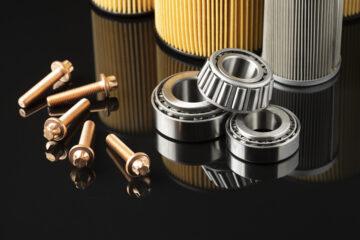Sometimes, the simplest tips are the ones that drivers take for granted. You would be surprised to know that many drivers are not aware of the proper way of checking tires for problems. Moreover, keeping your tires are the optimum air pressure levels will not only increase their life span, they will also improve your gas mileage, and make your ride feel more effortless. So here are some tips to check and adjust your tire’s air pressure:
- Let the tires cool before you check the air pressure level. This is because the tires are more inflated when they are warm, and less inflated when they are cold. So, letting your tires cool a bit before checking the pressure would help you get a more accurate reading. As an additional tip, you can check your tire pressure either in the early morning or late evening, when it is cooler, to get a better reading, closer to that of your manufacturer’s recommended figure.
- Then, you must remove the cap from the valve on one tire.
- After this, you can press a tire gauge onto the valve. Check the reading. If there is a wooshing sound of air escaping, this means you have not inserted the gauge in a proper manner. Perhaps, it is a bit off center or you are pressing it too lightly, in which case, you must exert more pressure.
- Then, you must add just enough air until you reach your carmaker’s recommended pressure level. For the optimum level, check your car’s manual, or a sticker on the driver side’s doorjamb. In case of overfilling, you can release some air by pushing on a tiny metal stem in the center of the valve with the sharp-pointed object, like the tip of a pen or a pencil. And if you need to guess the proper level, 32psi (pounds per square inch) is a good enough guideline for most passenger cars with standard tires.
- The next step is to replace the valve cap, then repeat all previous instructions with each tire, including the spare. Most drivers take the spare for granted and forgets to put enough pressure on it until it’s needed, and it’s in bad shape!
- You should also check the tread depth. Your tire’s recommended depth would depend on the make and type of tire you have. You can buy a cheap tread-depth gauge to give you an accurate reading.
- You should also check for even wear. If the treads outside or inside are considerably worn, you should check to see if you need to rotate your tires or have an alignment check.
- You can see your tire’s maximum pressure on the sidewall, but you should not reach this number unless you are planning to carry a very heavy load in your car.
- To make sure you always have accurate reading on your tire pressure, make sure to invest on a tire gauge.
- And if you live in a country with four seasons and frequent weather changes, it is always a great idea to change your tires in order to suit the weather and environment that you are driving on.
If you would like to purchase tire-related components and all other auto parts needs, check out Autopartsway.com. Our website offers the best discounts on high quality parts and accessories.



